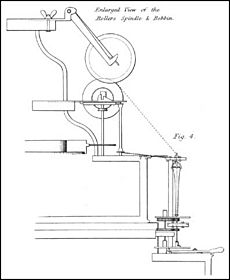Lewis Paul facts for kids
Lewis Paul (died 1759) was a clever inventor. He came up with the idea of "roller spinning." This invention was super important! It became the main way to spin cotton in early factories. His work helped create the first cotton mills.
Contents
Lewis Paul: The Inventor of Roller Spinning
Early Life and Big Ideas
Lewis Paul came from a French family called Huguenots. His dad was a doctor for a famous person, Lord Shaftesbury. Lewis started thinking about machines for spinning cotton around 1729. But he really made progress after meeting John Wyatt in 1732. John Wyatt was a carpenter in Birmingham. He had designed a machine that interested Paul.
The idea of using rollers to spin cotton was all Paul's. John Wyatt helped him build a model or a first machine. Paul got a special paper called a patent for his invention on June 24, 1738. This patent meant no one else could copy his idea without his permission.
After getting the patent, Paul tried to get people to use his machine. He even gave out licenses to pay off some of his debts. In 1741, he set up a machine in Birmingham. It was powered by two donkeys!
First Cotton Mills Using Paul's Invention
Edward Cave, a publisher, got a license from Paul. He set up machines in a warehouse in London. In 1742, he bought Marvel's Mill on the River Nene in Northampton. He rebuilt the mill to hold four or five water-powered spinning machines. Each machine had 50 spindles, which are parts that twist the cotton into thread.
This mill in Northampton was the very first cotton mill! Edward Cave died in 1754. The mill then went to his brother and nephew. Later, a merchant named Samuel Touchet had the mill. But he didn't make any money from it. Lewis Paul might have rented the mill himself, but he died in 1759. The mill eventually stopped being a cotton mill. By 1768, it was used for grinding corn again.
Another mill that used Paul's patent was in Leominster. This mill was built in 1744. Sadly, it burned down in November 1754.
Inventing Carding Machines
In 1748, Lewis Paul and another inventor, Daniel Bourn, both got patents for carding machines. Carding is a step before spinning. It cleans and straightens the cotton fibers. These carding machines were probably used in the mills in Leominster and Northampton. The technology from Paul and Bourn's carding machines became the basis for later, more advanced carding machines.
Paul's Lasting Impact
The main idea behind Lewis Paul's roller spinning process was later improved. Inventors like John Kay and Thomas Highs worked on it. Then, Richard Arkwright made it much more successful. Arkwright's machine, called the water frame, was patented in 1769. It's not fully clear how much Arkwright's machine was based on Paul's original work.
Like Paul and Bourn, Arkwright also added a carding stage to his machinery. He tried to use this to keep his patent rights longer. But he failed because the improvement to carding wasn't his own invention. Even though Paul's machines didn't make huge profits, his invention of roller spinning was a key step. It helped kick off the Industrial Revolution and changed how textiles were made forever!


